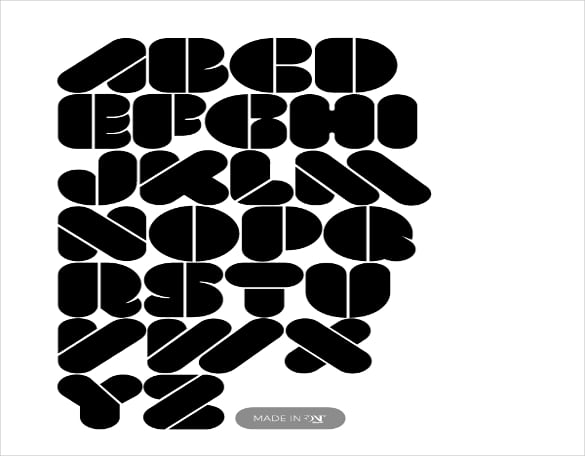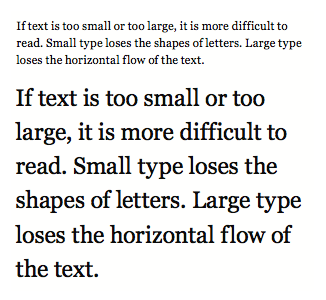
- #Fontdoc fonts are too small pdf
- #Fontdoc fonts are too small 64 Bit
- #Fontdoc fonts are too small software
You'll see theĮbook's title and its format. Halfway down, you'll see an entry with the 'File Path'. Click on that,Īnd a window will open up, containing information about the ebook. You'll see a drop-down box that has 'Item Info' as a choice. Library in either of two ways (thumbnail or list), and there will be a smallĪrrow next to the upper left corner of the thumbnail, and on the left hand Mode by displaying the 'Item Info' on the ebook itself. I would look at the ebook's format first. If I go back to EBSCO, what do I tell them? Book was formatted incorrectly and needs to be *what* recompiled?
#Fontdoc fonts are too small software
So, is the problem with the book: Software Engineering for Internet Applications?
#Fontdoc fonts are too small pdf
OK, went back to the free downloads and found Huckleberry Finn in PDF ebook format and that is working fine.
#Fontdoc fonts are too small 64 Bit
I am running W7 64 bit and downloaded DE through Firefox 6.0, not that that should matter.

Is this the expected user interface? Because, quite frankly, it's enough to put one off of Digital Editions forever! This is my first attempt to use Digital Editions. I then downloaded "The Geography of Bliss" which also appears to be EPUB, font is fine, margins are so tiny that black text crowds up against black digital editions borders for a verrrrry ugly experience. Dick short story which is EPUB and that font was fine with no need for me to modify. There are no "a" and "A" options on the toolbar so I think I am dealing with a pdf, not the flowable book format, EPUB. The fonts are WAY too small and clearly don't match what they are supposed to be since the pagination appears to lock the amount of text on the page and the text then occupies about 25% of the page. We strongly recommend to view your printed project at 100% scale on screen prior to submitting a job to confirm all type is legible and does not present an issue being read.I downloaded the book Software Engineering for Internet Applications from Ebsco via my local library. However, 6pt on a large format poster may not be legible at all due to viewing distance. For example, on a standard business card, 6pt would typically be legible to most individuals. The finished size of your project may also play a factor in selecting a minimum font size. In both of these scenarios, we recommend to use a font that meets the minimum recommendation for reversed type (0.5pt) and to read the design considerations of our custom stocks. This is when a light colored type is printed against a darker background. Other factors also include the use of reverse type, or knock-out type. Heavily textured paper stocks may interfere with the thin nature of script fonts or serif fonts. When considering a new font choice, the legibility of the font at a small size is a key factor. Compare this to the thinnest areas of your font and resize your font if needed. One method of doing this is using your design software to make a straight line with a. These processes reproduce details & thin lines with better clarity and precision than digital or offset printing but also come with their own limitations.Īs all fonts are different, it’s important to look over fonts that have thinner lines to ensure the minimum line thickness is being met. For the finest detail possible, letterpress and foil printing are ideal. Offset Printing, Digital Printing, Letterpress Printing, and Foil Printing are processes that each have different limitations. Many of our specialty papers have variations in texture that may interfere with very fine detail in a design. Typically, a line thickness of 0.5pt or thicker will print legibly on any of our digital stocks, unless otherwise noted. We recommend this minimum for the thinnest line in your typeface.įor digital printing, we recommend reading the support article related to our specialty papers. For offset printing, a minimum thickness of 0.25pt should be used. Depending on the paper being used, some fonts with a thinner overall weight, like script fonts, or ornate typefaces, may be difficult to read at small sizes. The thickness of a line or stroke also plays a role with the readability of a font when printed. Your font choice is the biggest factor when trying to find the best size to print. Other fonts can be chunky and thick making them easy to read when extra small.
Some fonts can be larger in point size but still have very thin serifs or lines that are extremely thin.


When determining the smallest font size to use in printing, a few factors must be considered: font style, line weight (line thickness), printing process, legibility, and final print size.Įvery font is designed with different set of thin and thick lines that are specific to that typeface. There isn’t a single answer to determine the smallest font size that can be used in every design.


 0 kommentar(er)
0 kommentar(er)
